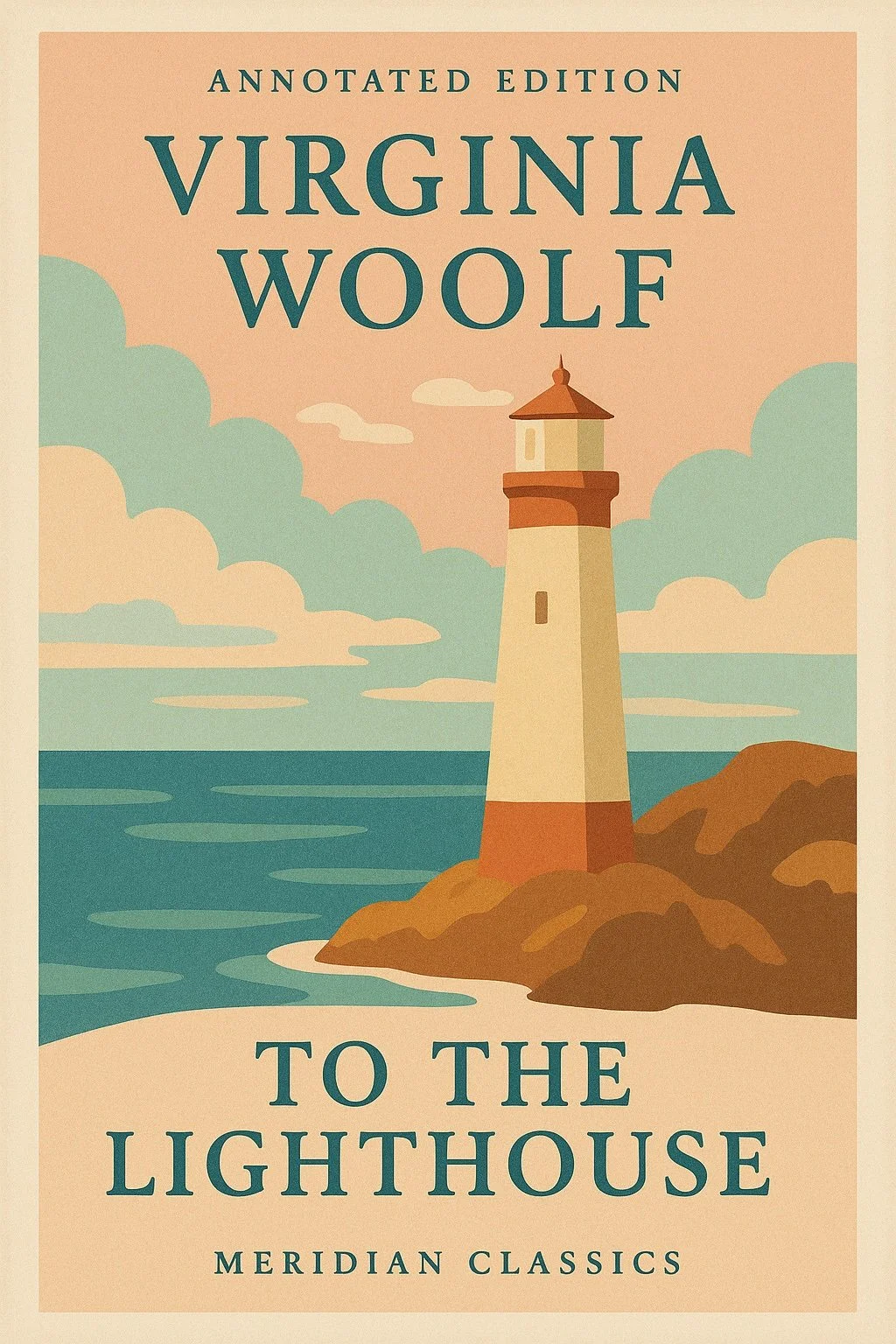 Image 1 of 2
Image 1 of 2

 Image 2 of 2
Image 2 of 2



To The Lighthouse
by Virginia Woolf
This annotated edition of "To the Lighthouse" includes:
Explanations of historical context
Literary comments and analyses
Enter the revolutionary consciousness of modernist literature through Virginia Woolf's sublime novel "To the Lighthouse", a work that transforms the simple story of a family's visits to their summer home into a profound meditation on time, memory, and the relationship between art and life.
The novel's three sections—focusing on Mrs. Ramsay's dinner party, the passage of time, and Lily Briscoe's completion of her painting—create both intimate family portrait and universal examination of how human consciousness processes experience and creates meaning.
Woolf's genius lies in her development of stream-of-consciousness technique to reveal the complex inner lives of her characters while maintaining the poetic beauty that makes experimental fiction emotionally accessible.
The novel's exploration of how individuals connect across the barriers of personality and time speaks to universal human desires for understanding and communion while examining the specific challenges faced by women artists and intellectuals in early 20th-century society.
Mrs. Ramsay emerges as one of literature's most complex maternal figures, combining traditional feminine virtues with intellectual sophistication while representing both the nurturing principle that sustains human community and the individual consciousness that resists simple categorization.
The work's treatment of the relationship between masculine and feminine modes of understanding reveals Woolf's belief that human completeness requires integration of different approaches to experience while challenging conventional gender categories through complex characterization.
The novel's famous "Time Passes" section demonstrates how historical events affect private lives while experimenting with narrative technique to show how consciousness processes loss and change across extended periods.
Lily Briscoe's artistic struggle provides both plot resolution and thematic statement about the relationship between art and life, suggesting that creative work can preserve and transform human experience while serving purposes that transcend immediate personal satisfaction.
Woolf's prose style achieves unprecedented psychological depth while maintaining poetic beauty, creating language that captures both the flow of consciousness and the precision of artistic observation.
The novel's influence on later experimental fiction cannot be overstated, establishing techniques for exploring consciousness and time that continue to influence contemporary literature while proving that innovative narrative methods can enhance rather than obscure emotional truth.
Publication Date: July 29, 2025
Book Size: 5 x 0.43 x 8 inches
Format: Paperback
ISBN: 979-8294542610
*Ships within 2-4 business days
by Virginia Woolf
This annotated edition of "To the Lighthouse" includes:
Explanations of historical context
Literary comments and analyses
Enter the revolutionary consciousness of modernist literature through Virginia Woolf's sublime novel "To the Lighthouse", a work that transforms the simple story of a family's visits to their summer home into a profound meditation on time, memory, and the relationship between art and life.
The novel's three sections—focusing on Mrs. Ramsay's dinner party, the passage of time, and Lily Briscoe's completion of her painting—create both intimate family portrait and universal examination of how human consciousness processes experience and creates meaning.
Woolf's genius lies in her development of stream-of-consciousness technique to reveal the complex inner lives of her characters while maintaining the poetic beauty that makes experimental fiction emotionally accessible.
The novel's exploration of how individuals connect across the barriers of personality and time speaks to universal human desires for understanding and communion while examining the specific challenges faced by women artists and intellectuals in early 20th-century society.
Mrs. Ramsay emerges as one of literature's most complex maternal figures, combining traditional feminine virtues with intellectual sophistication while representing both the nurturing principle that sustains human community and the individual consciousness that resists simple categorization.
The work's treatment of the relationship between masculine and feminine modes of understanding reveals Woolf's belief that human completeness requires integration of different approaches to experience while challenging conventional gender categories through complex characterization.
The novel's famous "Time Passes" section demonstrates how historical events affect private lives while experimenting with narrative technique to show how consciousness processes loss and change across extended periods.
Lily Briscoe's artistic struggle provides both plot resolution and thematic statement about the relationship between art and life, suggesting that creative work can preserve and transform human experience while serving purposes that transcend immediate personal satisfaction.
Woolf's prose style achieves unprecedented psychological depth while maintaining poetic beauty, creating language that captures both the flow of consciousness and the precision of artistic observation.
The novel's influence on later experimental fiction cannot be overstated, establishing techniques for exploring consciousness and time that continue to influence contemporary literature while proving that innovative narrative methods can enhance rather than obscure emotional truth.
Publication Date: July 29, 2025
Book Size: 5 x 0.43 x 8 inches
Format: Paperback
ISBN: 979-8294542610
*Ships within 2-4 business days

